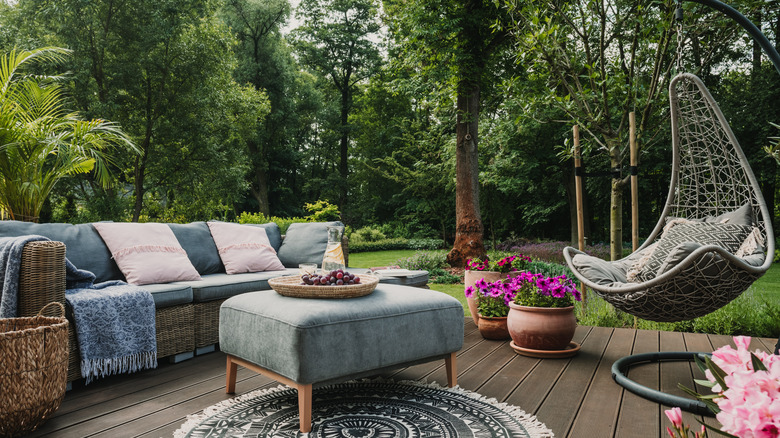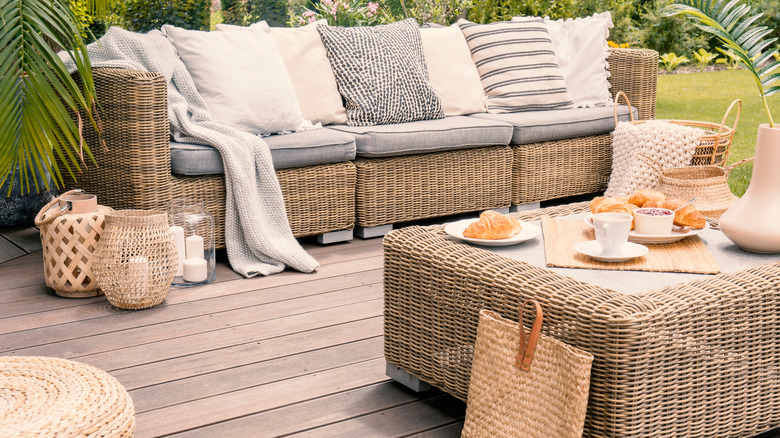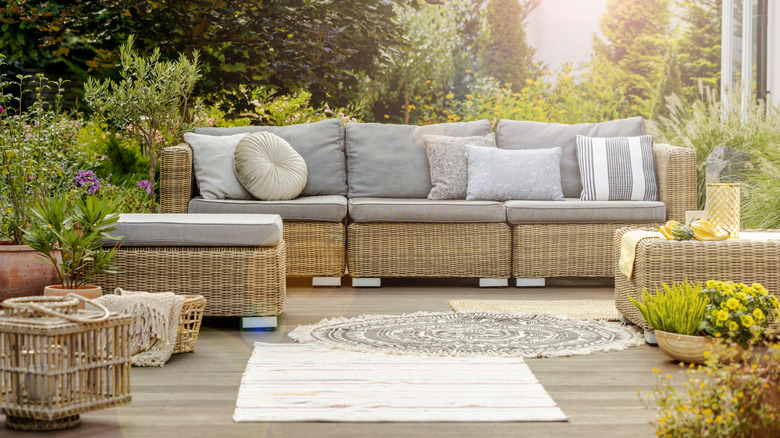Prevent Mildew On Your Outdoor Cushions With A Treatment Plan
Outdoor furniture is a multi-billion dollar market in the United States, with dining sets leading the category in sales. This shouldn't surprise many, as most homeowners are eager to create an extension of the home for casual get-togethers, barbecues, or simply lounging in the sun. However, whatever you'll be doing on your patio, keeping your outdoor furniture in tip-top shape is incredibly important. To this end, some of the best fabric choices for casual living spaces are polypropylene, acrylic, and olefin.
These engineered textiles feature essential qualities to combat the elements, such as UV protection, quick-drying capabilities, and non-active dyes that repel stains and are easy to clean. Even with these features, however, outdoor cushions are still at risk of attracting mildew, which can form when they're exposed to excess moisture and humidity. Unfortunately, just one spore can quickly spread and leave your patio furniture musty and discolored. Thankfully, mildew only extends along the surface of objects, making it easier than other molds to clean and prevent.
Routine care for outdoor cushions
Mildew is easy for the eye to see, especially if you know the signs. Any speckled discoloration on the cushions, whether black, blue, or yellow, clearly indicates mildew. The fungus also has a musty smell and a fuzzy, fluffy, or powdery surface. Luckily, there are many ways to provide routine maintenance for outdoor cushions to help prevent the spread. First and foremost, always try to bring seating inside or place them under a shelter if you are expecting rain. Even if your cushions are water-resistant, treating them with a waterproof spray for additional coverage is beneficial. Two coats typically work great, and remember not to saturate the cushions; only apply enough for a thin coating that will quickly dry.
Since mildew is reasonably visible, giving both sides of your cushions a good look every few days will ensure any spores are caught early. You should also avoid exposing your cushions to sunscreen and bug spray, even if the topicals have been applied to your body. These products give mildew agency to grow. If you find a small amount of mildew beginning to form, add a bit of detergent to some water and gently scrub the infected areas.
Removing mildew from outdoor cushions
If mildew goes unnoticed and sets into your furniture, there's no need to worry, as many cushion-saving remedies are available. One standard method of eradicating the fungus from your belongings is using borax, a mineral salt. Borax is frequently found in cleaning products and will not only remove mildew but also help remove the lingering smell. You'll want to start by soaking your cushion with water and mixing one cup of borax and a few pumps of dish soap into a bucket of cold water. Next, apply the solution and scrub the entire cushion, not just the infected areas. Let that sit for five minutes before rinsing, wringing out excess water, and allowing it to dry in the sun. Borax is toxic if ingested, and gloves should be worn to avoid skin irritation.
Another technique often used is pressure washing. Start by soaking the cushion and applying a cleaner to the pillows. Next, turn the washer onto its lowest setting and soak the cushion again until suds appear. Let the suds settle for a few minutes, being mindful not to let them dry, and then rinse with a powerful spray. All that is left to do is squeeze out the remaining water and let your cushions dry in a sunny spot. Many other methods, such as bleach and white vinegar, can also be used. However, always read the product's cleaning instructions to determine which solution will work best and ensure a damage-free cleaning.


